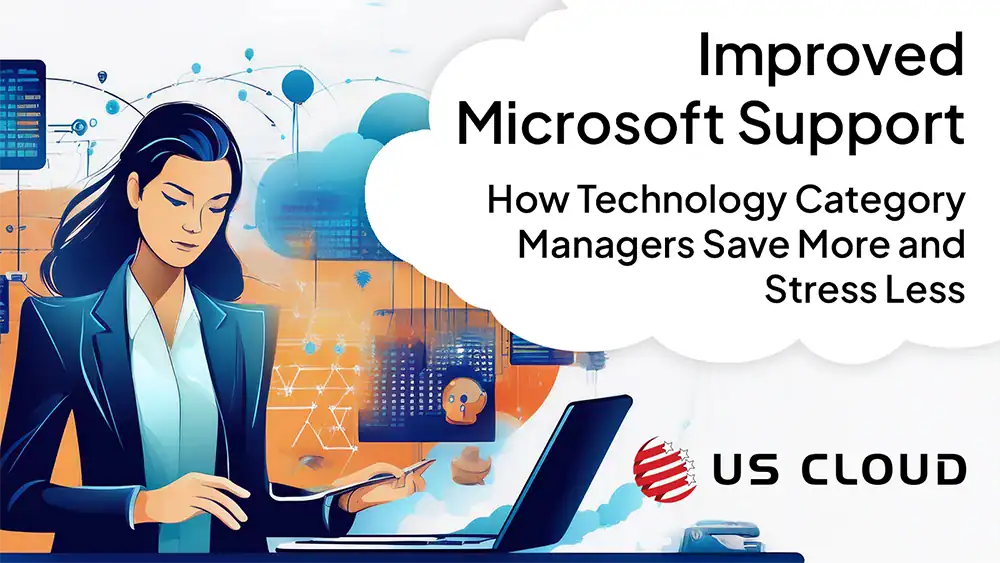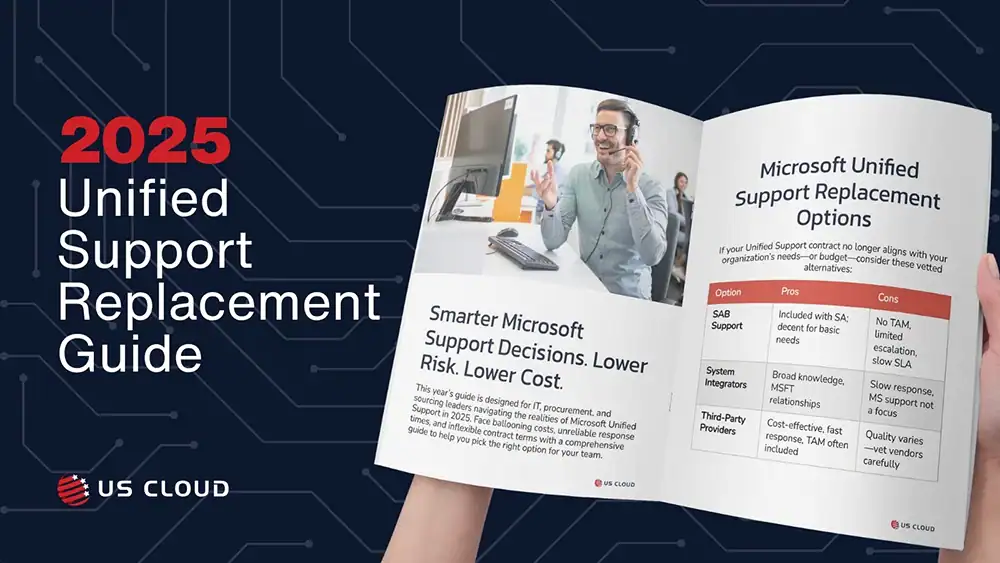Breaking Free from the Microsoft Monopoly: A Strategic Guide for Enterprise Leaders.

For enterprises fighting this fight every year, Unified Support represents more than just a budget line item—it’s a strategic vulnerability that’s costing millions in direct expenses and opportunity costs. Yet the most telling indicator isn’t the price increases themselves, but rather the simultaneous decline in service quality. This combination only occurs in one market condition: monopoly.
If your enterprise is still operating under the assumption that Microsoft Unified Support represents your only viable option, you’re not just behind the curve—you’re actively subsidizing a monopolistic system that more than 50 Fortune 500 companies have already abandoned. The myth of Microsoft support exclusivity isn’t just outdated; it’s become a competitive disadvantage in today’s rapidly evolving technology landscape.
The Anatomy of Microsoft's Support Monopoly
Understanding Microsoft’s monopolistic grip on enterprise support requires examining how the company leverages ecosystem dependency to maintain dominance. Unlike traditional monopolies built on single-product control, Microsoft’s support monopoly operates through what economists call “network effects“—the deeper enterprises integrate Microsoft technologies, the more dependent they become on Microsoft’s support infrastructure to maximize the value of their spend.
This dependency model creates artificial barriers to competition that have nothing to do with service quality or pricing efficiency. Microsoft doesn’t need to compete on support excellence because they’ve positioned themselves as the only “authorized” source for enterprise-level assistance. This positioning allows them to simultaneously raise prices and reduce service investment—a classic monopolistic behavior pattern.
Furthermore, under these conditions, service innovation tends to stagnate. The effect becomes immediately apparent when examining Microsoft’s support evolution over the past decade.
While third-party alternatives have introduced AI-powered ticket routing, predictive issue resolution, and 24/7 US-based expertise, Microsoft Unified Support has largely maintained the same offshore-heavy, tier-escalation model that frustrated IT professionals a decade ago (and still does today). This stagnation isn’t accidental—it’s the predictable result of reduced competitive pressure.
Current regulatory scrutiny of big tech monopolies adds another dimension to this analysis. Enterprises maintaining exclusive relationships with Microsoft for support services may inadvertently expose themselves to regulatory risk as antitrust enforcement intensifies.
Forward-thinking procurement teams are already factoring this regulatory environment into their vendor diversification strategies.
The True Cost of Monopoly Dependence
The financial mathematics of Microsoft’s support monopoly become clearer when analyzed through a comprehensive Total Cost of Ownership lens. How much does it take to maintain that support service in the long term? For enterprises in the $100+ million revenue range, the direct cost premium typically ranges from 30-50% compared to competitive alternatives.
However, this direct cost differential represents only the most visible component of the monopoly tax. An operational efficiency analysis reveals even deeper cost implications.
Microsoft Unified Support’s average response time for Severity 2 issues consistently exceeds industry benchmarks established by leading third-party providers. US Cloud, for instance, maintains response times that are measurably faster than Microsoft’s committed SLAs. This metric of excellence is maintained even while providing guaranteed U.S.-based expertise without the offshore handoffs that commonly extend resolution timelines.
The productivity impact of these delays compounds exponentially in enterprise environments. A single extended outage affecting business-critical Microsoft applications can cost large enterprises hundreds of thousands of dollars in lost productivity, yet the current monopoly model provides no meaningful accountability for these downstream costs.
Third-party alternatives typically offer more aggressive SLAs with financial penalties for non-compliance—a level of accountability that Microsoft’s monopoly position allows them to avoid.
Strategic risk assessment reveals perhaps the most significant hidden cost: vendor concentration risk. Enterprises relying exclusively on Microsoft for both technology infrastructure and support services create dangerous single points of failure. This concentration violates fundamental risk management principles that these same enterprises apply rigorously to other aspects of their operations, from supply chain management to financial planning.
The innovation opportunity cost may be the most damaging long-term impact. Budget dollars allocated to Microsoft’s premium support pricing represent resources that could otherwise fund innovation initiatives, infrastructure modernization, or strategic technology investments. When enterprises overpay for support services, they’re effectively subsidizing Microsoft’s monopoly while starving their own competitive advancement.
The Great Enterprise Exodus: Fortune 500 Leading the Transformation
The enterprise migration away from Microsoft Unified Support isn’t a theoretical trend—it’s a measurable market movement with quantifiable results. More than 50 Fortune 500 companies have already implemented third-party Microsoft support alternatives, with adoption rates accelerating across multiple industries and geographic regions.
Peer validation represents one of the most compelling aspects of this market movement. When procurement teams can reference similar enterprises in their industry who have successfully implemented third-party support alternatives, the perceived risk of change diminishes significantly. This peer effect is accelerating adoption rates as more enterprises recognize that maintaining Microsoft Unified Support has become the higher-risk option.
Industry Trends
Financial services organizations have been particularly aggressive in this transition, driven by their sophisticated risk management frameworks and cost optimization mandates. These enterprises typically see the most dramatic savings due to their large-scale Microsoft deployments and complex support requirements. Healthcare organizations follow closely, motivated by both cost pressures and the need for faster resolution times in patient-critical environments.
Geographic Trends
The geographic distribution of this adoption trend reveals interesting patterns. North American enterprises lead in absolute numbers, but European companies show the highest adoption rates relative to market size. This pattern likely reflects Europe’s more aggressive regulatory stance toward technology monopolies and stronger procurement governance requirements.
Contract Timing Trends
Risk mitigation strategies employed by these early adopters provide valuable blueprints for procurement teams evaluating similar transitions. Most successful implementations begin with pilot programs covering non-critical systems, allowing IT teams to validate service quality and establish confidence before expanding coverage. This staged approach reduces transition risk while providing quantifiable performance data for internal stakeholders.
Third-Party Support: The Strategic Alternative
US Cloud’s emergence as the leading Microsoft support specialist reflects broader market maturation in third-party enterprise support services. Unlike generalist support providers, US Cloud’s pure Microsoft specialization allows them to maintain expertise depth that often exceeds Microsoft’s own frontline support capabilities. This specialization advantage becomes particularly pronounced in complex enterprise environments where multiple Microsoft technologies intersect.
The zero-offshoring commitment represents more than just a service differentiation—it addresses fundamental communication and resolution efficiency issues that plague offshore support models. U.S.-based expertise eliminates time zone delays, reduces communication barriers, and provides cultural context that significantly improves problem resolution accuracy. For enterprises where Microsoft technology downtime has direct business impact, these efficiency improvements translate to measurable cost savings that often exceed the direct support cost differential.
Performance guarantees offered by leading third-party providers create accountability mechanisms that Microsoft’s monopoly position allows them to avoid. US Cloud’s guaranteed response times and resolution SLAs include financial penalties for non-compliance—a level of accountability that Microsoft Unified Support notably lacks. This guarantee structure aligns vendor incentives with enterprise needs in ways that monopolistic models inherently cannot achieve.
Security and compliance capabilities of mature third-party providers now match or exceed Microsoft’s standards. US Cloud maintains the same enterprise security certifications, compliance frameworks, and audit processes that Microsoft uses, while adding additional transparency and reporting capabilities that many enterprises find superior to Microsoft’s standardized offerings.
The comprehensive comparison framework between Microsoft Unified Support and third-party alternatives reveals consistent patterns across cost, performance, and accountability metrics.
Third-party providers typically offer 30-50% cost savings, faster response times, more transparent reporting, and stronger accountability mechanisms. The primary advantage Microsoft maintains is brand recognition and the perceived safety of staying with the technology vendor—advantages that diminish as third-party track records mature.
Strategic Support Implementation Framework Post-Microsoft Monopoly
When you’re ready to break free from the grip of Microsoft Unified Support, you can start your journey back to support autonomy carefully. Below are some aspects of implementation to consider in order to smooth your transition away from the Microsoft Monopoly.
Risk Assessment
Procurement-focused decision criteria for evaluating support alternatives should begin with comprehensive risk assessment methodologies that examine both the risks of change and the risks of maintaining the status quo.
Modern procurement teams increasingly recognize that vendor concentration represents a strategic risk that must be actively managed, making third-party support evaluation a risk mitigation exercise rather than a cost-cutting initiative.
ROI Calculation
ROI calculation models for support vendor transitions should incorporate both direct cost savings and operational efficiency improvements. The financial analysis becomes compelling when procurement teams include productivity gains from faster resolution times, reduced escalation requirements, and improved service transparency. These operational benefits often exceed direct cost savings in total value creation.
Technical Transition Preparation
Technical transition planning should prioritize risk mitigation through staged implementation approaches. Most successful transitions begin with non-critical systems and expand coverage as confidence builds. This methodology allows IT teams to validate service quality while maintaining fallback options during the initial transition period.
Post-Contract Performance Monitoring
Performance monitoring and success metrics establishment should focus on measurable improvements in resolution times, first-call resolution rates, and overall satisfaction scores. These metrics provide objective validation of the transition’s success while identifying areas where further optimization may be beneficial.
The Future of Enterprise Support Independence
The growing shift toward third-party support is part of a larger trend in enterprise IT: moving away from vendor lock-in and toward greater flexibility and control. We’ve seen similar shifts in cloud, cybersecurity, and software—areas where organizations are choosing the best tools for the job rather than sticking with one provider out of habit or legacy agreements.
Regulators are also paying closer attention to the dominance of big tech players. As antitrust scrutiny ramps up, companies that rely exclusively on major vendors could find themselves under the microscope or at least caught in the crossfire. Diversifying support providers isn’t just about performance or cost—it’s also a smart way to stay ahead of potential compliance issues.
Early adopters of third-party support are already seeing the benefits: better pricing, more flexible terms, and closer, more responsive relationships with support partners. But those advantages won’t last forever. As the market matures, the best deals and strongest vendor relationships will go to those who moved early.
At the heart of this shift is a powerful business case: building resilience through technology independence. Organizations that keep their options open and avoid over-dependence on any one vendor are better equipped to handle change—whether it’s new regulations, market disruptions, or evolving business needs.
Today, choosing between Microsoft Unified Support and third-party alternatives isn’t about taking a gamble. It’s about deciding whether to stay in a model that serves the vendor’s interests or move to one that prioritizes your organization’s goals. For large enterprises, clinging to Microsoft’s support monopoly has become the riskier choice.
More than 50 Fortune 500 companies have already made the switch—not just to cut costs, but to gain strategic leverage. Because in the end, monopolies are built to protect themselves, not their customers. Breaking away from Microsoft’s support monopoly isn’t just a smart financial move—it’s a strategic step forward for any enterprise focused on performance, agility, and long-term success.




